Share
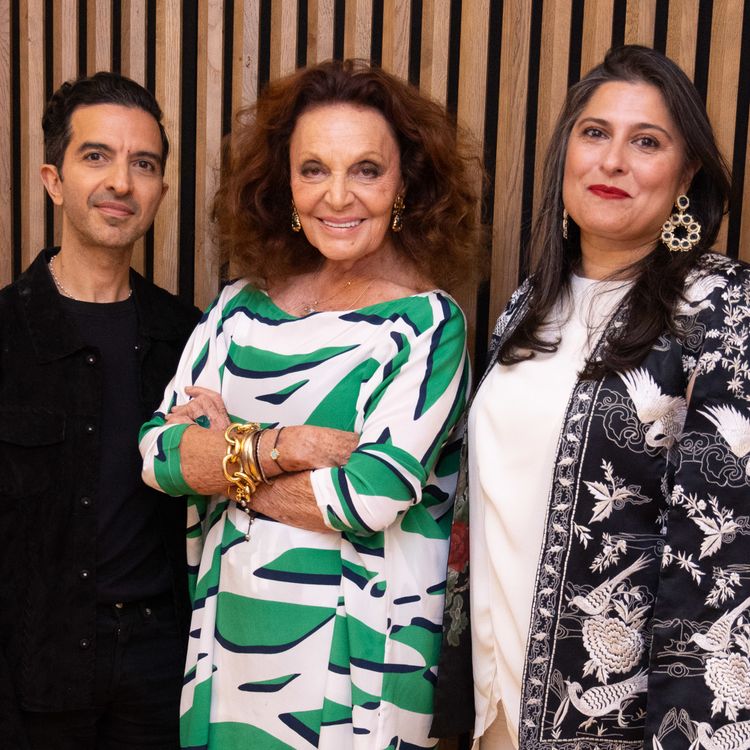
The Business of Fashion Podcast
Diane von Furstenberg on the Making of Her New Documentary
From her miraculous birth as the daughter of a Holocaust survivor to becoming a fashion powerhouse with her signature wrap dress, Diane von Furstenberg's remarkable journey is one of resilience, innovation, and empowerment.
In a new documentary about her life called "Diane von Furstenberg: Woman in Charge,” Academy Award-winning filmmaker Sharmeen Obaid-Chinoy combines archival footage and intimate interviews with von Furstenberg’s closest friends and family to paint a vivid picture of a woman who has always been true to herself and her vision.
“The most important thing is to work hard at being true to yourself and liking yourself. If you are true to yourself, you are free,” shared von Furstenberg.
“Women are defined by society and placed in boxes and labels, and sometimes are forced to make decisions that they don't want to,” added Obaid-Chinoy. “Diane's story coming at a time like this is so important because it is an anthem of freedom.”
This week on The BoF Podcast, von Furstenberg and Obaid-Chinoy speak to BoF founder and editor-in-chief Imran Amed at the London premiere to share their experience of making the documentary and the new learnings this process surfaced about a life well lived.
Key Insights:
- When creating documentaries, Obaid-Chinoy’s goal is to carefully peel back the layers of a person until reaching their core. After countless hours of conversation and travel with von Furstenberg, she believes she succeeded. “This is a story about a woman who faced adversity and rose up each time. I feel like all my films are about women who are faced with extraordinary circumstances. And Diane fits right at the heart of it.”
- For von Furstenberg, the documentary also tells a crucial tale of her mother and her legacy. “It's about this woman who refused to die, who refused to be a victim, who told me never to be afraid, who never told me to be careful, who wanted me to have a big life,” she shared. “when you have a strong mother, you know, and you're being told that you are her torch of freedom. That torch could be heavy. But that's what was given to me. And I honoured her.”
- Themes of gender, autonomy and power are central to the film, but ultimately, for von Furstenberg, the ability to connect with oneself is paramount. “Being in charge is not an aggressive thing; it's owning who you are. … The most important relationship is the relationship we have with ourselves.”
Additional Resources:
- The Tragedy and Triumph of Diane von Fürstenberg | BoF
- The BoF Podcast | Diane von Furstenberg on the Power of a Little Dress
- Diane von Furstenberg Makes a (Profitable) Comeback | BoF
More episodes
View all episodes
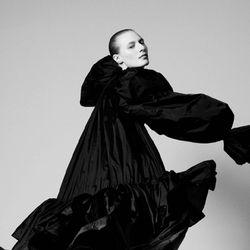
Can Luxury Brands Rebuild Trust With Customers?
01:05:53|Instead of his usual place in the host’s seat, BoF founder and CEO Imran Amed appears this week as a guest in an interview with Jonathan Wingfield, editor-in-chief of System Magazine, alongside Luca Solca, senior analyst of global luxury goods at Bernstein — as featured in the second issue of System Collections.Recorded in late October, their discussion maps a luxury market defined by expectation swings, tighter cost control and headline creative resets, with pricing and value now at the centre of the consumer equation. Amed and Solca examine how luxury groups are refocusing, why design-led and more accessibly priced players are gaining ground, and the conditions required for a genuine comeback at the top end.“Everyone seems to be fascinated with the ultra-wealthy spending, exorbitant amounts of money, but they are not the majority of the market — they are a portion at most,” says Solca.Amed agrees. “Nobody out there really thinks any of these prices are justified,” he says. “One of the big conundrums facing the industry is, how do they restructure that pricing pyramid? They can’t just reduce prices on the existing products that are in their core collection because that’s almost an admission of having broken that ceiling down.”Key Insights:After years of price hikes, the industry hasn’t just met its price ceiling — it “broke through that ceiling, smashed it to bits,” argues Amed. The core dilemma now is rebuilding the pricing pyramid without publicly walking back on prices. “I just think some of the executives in the industry are just completely out of touch with how the average customer feels. That’s not just aspirational middle-class customers, that’s also the ultra wealthy customers. Nobody out there really thinks any of these prices are justified,” says Amed.Solca warns that chasing the top end customer cannot be the only approach for brands. “Everyone seems to be fascinated with the ultra-wealthy spending exorbitant amounts of money, but...they are not the majority of the market. They are a portion at the most,” says Solca.However, price inflation at the very top has created space just below what’s considered traditional luxury for design-led brands with sharper value. “It’s opened up a really interesting opportunity for smaller brands that are highly creative,” Amed says. He points to labels “just below luxury and just above US contemporary,” where distinct product and accessible pricing meet demand for uniqueness.For Amed and Solca, the formula for success is for brands to bridge their DNA with the cultural zeitgeist and deliver real value to customers. Chasing trends that deny what a house stands for won’t work, like “Gucci trying to look quiet is like a zebra camouflaging as a lion,” says Solca. Amed adds the customer value test in “the relationship between what a customer pays and the perceived value of what they get in return.” If brands fail that test, “they’ll be less and less a part of that overall mix of what customers spend their money on.”Additional Resources:Jonathan Wingfield | BoF 500The Debrief | 5 Big Questions About LuxuryPrada’s Versace Acquisition Closes, Now the Real Work Begins
5 Big Questions About Luxury
30:46|Luxury’s most eventful year in some time is closing with a bang. From Prada’s Versace acquisition to Matthieu Blazy’s debut Chanel Métiers d’Art collection, seismic industry developments are landing on an almost daily basis.In this episode of The Debrief, senior correspondent Sheena Butler-Young and executive editor Brian Baskin are joined by BoF’s Luxury editor Robert Williams, who unpacks all of the industry’s most pertinent news, including the strategic implications of A$AP Rocky’s partnership with Chanel, the rise of the beaten up handbag, and the future of luxury in 2026.Key Insights: The luxury market’s forecast is cautiously optimistic, relying heavily on Chinese consumers and designer-led resets to revive the industry. Brands also need to grapple with justifying value after aggressive price increases in recent years. “Pricing’s certainly going to be an issue and it’s going to be a big issue in the US, which is a really key market for maintaining the brand’s top line,” Williams said.With Prada’s acquisition of Versace closing this week, it remains unclear as to whether the brand will continue with Dario Vitale’s new approach to Versace, or steer towards a more classic, glossy aesthetic. “[Versace] has gone through a pretty radical shift over the past couple of months and whether or not [Prada’s] going to want to continue with that is the biggest most urgent decision, and for them to clarify that for the market,” Williams said.Luxury dining is becoming increasingly popular across the world, but can luxury chains like Langosteria remain cool as they expand? “Fashion once upon a time was all made by your local tailor, your local couturier, and once they decided they could scale taste, that was more desirable than just having something that was more small-scale … In food it seems like it’s kind of the opposite,” Williams said.Originally inspired by Jane Birkin and Mary-Kate and Ashley Olsen, beaten up bags are everywhere in luxury fashion today. “There’s something about the fact that, no matter how much you wear out that bag and trash it, it’s still not going to break and fall apart. I think it just makes it a really cool style gesture. It shows you’re not someone who just bought into it yesterday,” Williams said.Additional Resources:Prada’s Versace Acquisition Closes, Now the Real Work BeginsHow Beat-Up Bags Became a Luxury Status SymbolBreaking Down Chanel’s A$AP Rocky Partnership
An Act of Love: Securing Franca Sozzani’s Legacy
36:57|Francesco Carrozzini grew up inside the rarefied world of Vogue Italia — not just observing it, but living it. As the son of Franca Sozzani, the magazine’s legendary editor-in-chief, fashion wasn’t just part of his surroundings, it was a language he was exposed to everyday.He became a photographer and filmmaker, but it was only later that he turned the camera towards the most personal and complicated subject in his life: his relationship with his mother. The documentary Franca: Chaos and Creation premiered in Venice just before her passing in 2016 following a battle with lung cancer. “When I asked her to take a look at the first cut of the film, she said, ‘This is the most mediocre thing I've ever seen. Do yourself a favor and find a point of view.’ That opened my eyes on the importance of always trying to find a point of view,” Carrozzini recalls. “In a regular relationship between mother and son, that might have been excruciating. In ours, it wasn't, because we treated each other like friends.”Since Franca’s passing, Carrozzini has been working to transform memory into meaning. He co-founded the Franca Fund for Preventive Genomics — an initiative advancing genomic screening to prevent the disease that took his mother’s life. BoF founder and CEO Imran Amed met Carrozzini in Doha, Qatar, where last weekend he hosted the fund’s first-ever gala and they spoke about what it means to honour someone not by preserving their legacy, but by evolving it.Key Insights: Growing up inside Vogue Italia shaped Carrozzini's eye and his expectations of 'normal'. He recalls going to the offices, and making his own magazines. "This was a time before computers so they were cutting up pictures and there was spray glue. [...] That's how magazines were made. I would go and do the same,” he says. "That was my special big extended family, because my mother's job was her life." Beyond the film itself, Carrozzini shared that it was the end-of-life collaboration that mattered the most. “The actual big stories were those last months of our relationship, finishing the film and then screening it in Venice,” he says. “All of a sudden the lights turn on and everyone's crying because some people know, some people don't, but we look at each other and we're like, ‘This is sort of like our last big moment together.’”Carrozzini clearly distinguishes tribute from true legacy. “Memory and legacy often get confused. Just remembering someone feels like you're carrying their legacy, but it's not. I really wanted something meaningful, as an act of love, taking something personal and making it collective.” That impulse led Carrozzini to genomics research with Harvard geneticist Dr Robert Green, backing pioneering newborn-genome studies and accelerating grants. Additional Resources:Fashion Trust Arabia Names Prize Winners in Qatar | BoF Franca Sozzani, 1950 - 2016 | BoF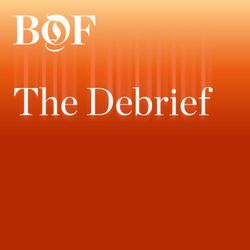
Is This the Year Discount Mania Finally Ends?
27:33|As the holiday shopping season approaches, consumer sentiment is slumping, yet spending is bifurcated – the top end keeps buying while the bottom 80 percent is more cautious. With Black Friday looming, brands are recalibrating promotions around value, desirability and hero products rather than blanket discounts. In luxury, upheaval at several department stores has created white space for rivals to woo high-spending clients through aggressive clienteling and tighter, faster vendor partnerships. In this episode of The Debrief, hosts Brian Baskin and Sheena Butler-Young speak with BoF reporters Cat Chen and Malique Morris about how brands are planning the season.Key Insights: Consumer spending hasn’t vanished, but it’s shifted toward shoppers who still feel flush. As Chen notes, “people are not really feeling rosy about the state of the economy, but the irony is that they’re still spending money.” Since Covid, “spending has been driven by the wealthier segment,” and it’s clear that “what consumers want is value… they want to get a good deal, but they don’t want to buy a cheap product.” For retailers, that means “more sophistication around price architecture” and using AI “to price products perfectly.”“Black Friday–Cyber Monday is not a fix for a mediocre year,” says Morris. Instead, winners are “prioritising desirability over discounts,” introducing “new products specifically for this time” and pushing “hero best-selling product.” The old playbook is out, and “slapping a 50% off everything discount on Instagram is not gonna cut it,” says Morris. In the “age of curation,” even deal-hunters expect editing, storytelling and reasons to stop scrolling.Morris argues that even in a discount-driven moment like Black Friday, shoppers still want offers to feel edited and intentional, and brands are responding with more curated tactics rather than blanket markdowns. “We’re in the age of curation and so even when people are expecting deals, they don’t want to feel like they’re just getting slopped,” says Morris. Tariffs and margin pressure mean many brands cannot afford a race to the bottom, pushing them to plan inventory more carefully, introduce new products specifically for this period and reserve discounts for hero items.Chen explains that this holiday season is especially high stakes for luxury multi-brand retailers because a few big players are stumbling – and everyone else is trying to capitalise. “Saks and SSENSE and Luisa Via Roma are three players that have faced pretty bad challenges this year,” she says. “They have opened up white space for their competitors on healthier financial footing to come in and basically eat their lunch and acquire their customers, acquire their sales.” The response is an aggressive push on clienteling and talent: retailers are not just targeting wealthy individuals, but also the salespeople and stylists who already manage those relationships.Additional Resources:Brands Try to Get the Tone Right for Holiday 2025 | BoF Inside Luxury Retailers’ Bare-Knuckle Fight to Win the Holidays | BoF Black Friday Beauty Goes Beyond the Discount | BoF
Prada Group CEO Andrea Guerra on Fixing the Luxury Business Model
25:44|Over the last two years, demand for luxury fashion has softened as aspirational shoppers have pulled back and consumer fatigue has crept in. Yet, Prada Group has continued to grow, by prioritising brand DNA, employing disciplined curation and creating strong connections to contemporary culture.“Prada is culture, culture is discussion, culture is opinions. The more you’re discussed, the more you’re able to be influenced by other people's opinions. I think this is unbelievably fruitful,” says Guerra. “This is not a vertical thing; it's a total constant confrontation and change of opinions. This is how things are born in the Prada brand – and I love it.”This week on The BoF Podcast, BoF founder Imran Amed quizzes Mr Guerra on the luxury business model from developing pricing strategies to the importance of creative tension and cultural relevance.Key Insights: To navigate a shaky market, brands need to simplify and go back to their DNA. “Brands have gone all over in the past 10 years. And I think that today it's a time that you simplify and you do your own thing,” says Guerra. “Your brand has a DNA, and that DNA cannot be killed in the long term …This is where people are recognising you, so you need to go back there. There are certain things we need to do better again, but better again means to go back some years. ” On the industry’s post-pandemic price hikes, Guerra says “If I’m not able to sell you an emotion, then we discuss pricing. If we discuss pricing, then I’ve failed on the first part.” Some brands, he adds, have been spoilt by certain trends, like inflation. “At a certain stage for some brands it was easy just to increase prices,” he says. Now Guerra says, “we’re back to normal” — and the conversation should return to “creativity, innovation [and] our ability to tell people about emotions.”The decision to acquire Versace was a strategic, long-term bet.. “Versace is a fantastic Italian, authentic, unique, credible brand which has a huge complementary role inside our group … hitting different aesthetics, different consumer bases,” yet sharing roots in culture. The mandate is steady, patient value-building. “There are no broken things. We have an opportunity, and the opportunity is long term. I’m not expecting any sort of tangible numeric result tomorrow morning. We have fixed certain milestones which are very important, but it will take time. And we have the patience.”For Guerra, durable desirability is born from managed friction. “There is a history of relationship and tension between the DNA of a brand and a creative impulse, and this tension in the long term must be a positive equation,” he says. “When I talk about culture, we are doing culture ourselves … When you are buying a Prada product, you are buying an opinion, and I am happy that you’re buying an opinion.”Additional Resources:BoF VOICES 2025: Untangling the Fashion Industry’s Future Prada’s Lorenzo Bertelli to Become Versace Executive Chairman | BoF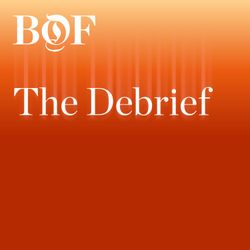
Can Fashion Still Meet Its Climate Promises?
30:26|As COP30 gets underway in Belém, a port city on the edge of the Brazilian rainforest, the mood is sober. A decade after the Paris Agreement was adopted internationally to limit global warming, many of the world’s largest fashion companies have fallen short on emissions cuts — and some are moving in the wrong direction, emitting pollutants at an even higher rate than in previous years.In this episode of The Debrief, senior correspondent Sheena Butler-Young and executive editor Brian Baskin are joined by BoF reporters, Sarah Kent and Shayeza Walid, to examine why progress has stalled, how fast-fashion growth is reshaping the landscape, and what practical steps — from decarbonising supply chains to adapting factories to extreme heat — are needed next. Key Insights: Kent says, “I would not say any brand has a credible pathway right now to meet their targets for 2030,” “Even companies that have shown that they’re able to reduce their emissions to date, driving down their carbon footprint over the next five years is going to be harder, more complex and more costly… and really no one company can do that alone.”Kent highlights the industry’s deep structural bind: “The fundamental conflict at the heart of the fashion industry’s climate commitments is that you’ve got a business built on extracting stuff and producing stuff and selling stuff. The more stuff they sell, the better the business does, but the worse the environmental impact is,” “Profitability and sales growth are fundamentally at odds with the environmental commitments companies have made.”Short-term thinking still in the boardroom locks in higher climate impacts, adaptation costs and supply-chain risk. As Kent puts it, “On climate, if you don’t act, you don’t have to make these big investments, and you can keep growing your business and things will trundle along for some time. But the longer you wait to act, the worse the climate impacts you’re going to have to deal with are going to be, and the higher the cost of mitigating them, adapting to them, and trying to continue this business in a climate-constrained world.”Voluntary commitments aren’t enough at fast fashion’s scale. Walid points to Shein: “Shein’s case is very instructive. There’s limits to voluntary commitments, which is what the majority of these brands have made.” She continues, “When the business model is built on speed and volume… it just shows that voluntary commitments are maybe not enough for a fashion brand – especially a brand as big as Shein – to actually tangibly reduce its emissions when its entire business case doesn’t stand for that.”Climate impacts are now serious human and corporate risks. “It’s not just a corporate issue anymore,” says Walid. “People who have the visuals recognise the reality of what’s happening in these factories and the people who are making clothes at the end of the day.” Kent adds: “People who are suffering from heat stress are not as productive… floods are disruptive to production, to logistics, to supply chains. Just because we have not yet seen a major disruption to the apparel supply chain from these climate crises yet is more luck than anything else.”Additional Resources:Can Fashion Still Meet Its Climate Promises? | BoF The Frayed Edge: Is Fashion Quiet Quitting on Climate? | BoF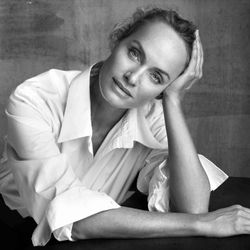
Amber Valletta: ‘Do What You Love. Serve a Higher Purpose.’
42:22|Amber Valletta grew up in Tulsa, Oklahoma, spending time on her grandparents’ farm. Her childhood was defined by open fields, a freshwater creek and a simple rule from her mother: go outside and use your imagination.At 15, a local modelling class set her on an unexpected path that would take her first to Milan, and then around the world. Within a few years, Amber became one of the defining faces of 1990s fashion — the Tom Ford Gucci era, the great editorials and the campaigns that shaped a generation’s idea of beauty.But by her mid-20s, success had taken its toll. Amber stepped away from modelling, got sober, became a mother, pursued acting and found purpose in environmental advocacy. Today, as a United Nations Environment Programme goodwill ambassador, she’s using her influence to push for real change on climate, biodiversity and pollution.“I don’t make my life all about me,” she told me. “I make it about other people too — about connection and love. When you have that, life is so much more enjoyable.” This week on The BoF Podcast, BoF founder Imran Amed sits down with Amber Valletta to trace her journey from Tulsa to the world’s fashion capitals, how sobriety transformed her life at 25 and why she believes fashion must finally take responsibility for its impact on the planet.Key Insights: Valletta’s childhood in nature forged a creative compass and the ability to adapt anywhere.That self-reliance became a career asset when she landed in Europe as a teenager: “I have this strange thing that I’ve always had — it’s like wherever you plant me, I grow. I’m like a weed or something, like an Oklahoma weed.” Those early years also taught her to observe and self-teach: “No one taught me. I just started figuring it out … you look, you watch, you listen.”Opening Tom Ford’s Gucci Fall/Winter 1995 show gave Valletta a once-in-a-career jolt. “When I walked out on the runway, it was probably one of the few times I’ve had that adrenaline rush … that spotlight came on and boom,” Valletta recalls. The moment was so impactful because it diverged from what dominated the time: “Nothing looked like that … it was like a shot of adrenaline for everybody,” she says.Valletta was recently named UN Environment Programme goodwill ambassador, where she is focused on climate change, biodiversity loss and on “fashion’s role as one of the biggest polluters.” The brief is practical: “We need to invest in innovation and investment in decarbonisation … We need all hands on deck. We need collaboration,” she says, warning, “If it doesn’t change, we’re going to implode on ourselves.”Valletta’s guidance for a fulfilling life is simple: “Do what you love. Serve a higher purpose. Enjoy the moment. Enjoy where you’re at.” She couples that with practical habits for staying power. “I ask questions, I show up with a lot of gratitude … I try not to do too much so that when I show up to work, I’m fully present for everybody.” Additional Resources: Amber Valletta | BoF 500 | The People Shaping the Global Fashion Industry Can Fashion Still Meet Its Climate Promises? | BoF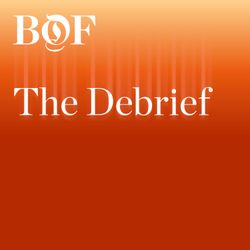
Why Is Everyone Obsessed With Accessories?
22:06|Colourful charms, Labubu-laden handbags and a ring on every finger – accessories sales are booming. A surge of necklace stacks, playful rings and quirky charms is being driven by Gen Z’s push for personal style, using add-ons to customise minimalist wardrobes on a budget. With apparel prices up, accessories act as “little luxuries” and entry points into brands. Retail is responding, with buyers widening small-leather-goods assortments and e-commerce shoots now styling bags with charms to encourage add-on purchases. BoF reporter Diana Pearl joins The Debrief to unpack what’s fuelling the accessory pile-on, how labels are capitalising on it, and how far the trend can go before the cycle turns. Key Insights: According to Pearl, Gen Z is reaching for accessories as a way to personalise their minimalist wardrobes. “Gen Z, which is really looking to define their sense of personal style, is leaning on accessories to do so, especially because minimalism in clothing is still very popular… but they also wanna have a little more fun and accessories are a way to do that,” she says. Regarding the longevity of this trend, Pearl adds, “I think we'll see a consumer that is primed to think of accessories as a more important part of their wardrobe – not just like a finishing touch, but a core element of it.”The Labubu craze captures the mood of the accessories trend – playful, collective and endlessly customisable. “There’s so many different Labubus. There’s a bit of that thrill of the hunt to try to find the right one. You can add it to an Hermès bag or a $100 leather tote from J. Crew,” says Pearl. For many shoppers, she says, “it really speaks to that desire for fun and adding a personal touch. People want things that make them feel good.”While luxury houses profit from entry-level add-ons, Pearl sees independent makers riding the wave. “I think it probably is helping luxury brands but I think even more than that, it’s helping small brands that really can make these cute accessories that feel distinct and different from what everyone else has, because I think a huge part of this is that quest for personal style, wanting something unique,” says Pearl. Pearl frames the moment as a behavioural shift rather than a transient trend. She argues, “trends go away, but they never fully go away. I think every trend leaves a lasting impact or impression on us. Maybe Labubus, toe rings, and bag charms won’t be quite as popular, but maybe they’ll evolve.” Crucially, “I think that this has unlocked something in people… it will have a lasting after effects of this trend, even if not everybody is wearing five necklaces at once in a year from now.”Additional Resources:How Far Can Fashion’s Accessory Obsession Go? | BoF Why Jewellery Feels Like a Better Deal Than a Handbag | BoFLuxury’s Untapped Opportunity in Men’s Jewellery | BoF
Why Robert Wun Ditched the Wholesale Model for Bespoke Creations
48:42|Soon after sharing his graduate work from the London College of Fashion online, Hong Kong-born Robert Wun was approached by Joyce Boutique to buy his collection. Like many other independent designers, he found navigating the wholesale model challenging and during the pandemic he pivoted to serving clients with one-off, customised designs with couture level pricing. “I realised that, in order for me to have a strong wholesale business model or grow a brand, this is not the time yet,” Wun says. “For me to sacrifice all these years – to leave my family, to come all the way to London, to chase my dream – everything I create needs to have a responsibility, not only for myself but also for the message that I’m trying to relay.”This week on The BoF Podcast, BoF founder Imran Amed sit down with Robert Wun to discuss his path from Hong Kong to London to Paris Couture Week, and how he’s building a client-first business that protects his creativity while staying commercially viable.Key Insights: Hong Kong’s cultural imprint shaped Wun's eye from an early age. Growing up in a city he saw as a creative engine, Wun points to icons like Wong Kar-wai as inspiration, adding that “Hong Kong is almost a symbol of cultural leadership when it comes to Asia.” Wun recalls discovering how deeply global fashion intersected with the city, from Joyce Ma championing new designers to Jean Paul Gaultier creating stage pieces for musicians in Hong Kong. "You always had this idea that creativity was powerful ... but I think what changed was a shift in culture and economic power," he says.When pandemic lockdowns halted the regular fashion calendar, it provided a reset for Wun. Being forced to release his Autumn/Winter 2021 collection with an iPhone shoot done in his studio kitchen, made him prioritise meaning and message. “Everything I create needs to have a responsibility, not only for myself, but also for the message that I’m trying to relay,” he says. That conviction pushed Wun to prioritise work that is no longer “to make money” but rather “to communicate and be honest.” Wun has shifted from wholesale to bespoke orders and selective collaborations. “We are a team of almost twelve now. We’ve turned from not making any profit at all to actually starting to make profit since last year, and we’re almost doubling in terms of turnover by the end of this year,” he says. The core is a loyal private clientele, and demand is anchored in the US — particularly New York and Los Angeles millennials and Asian Americans — plus art collectors and couples seeking modern ceremony wear. “Our average for those couture orders ranges from £45,000 to £60,000,” Wun says, a mix that allows him to protect his creativity while running a commercially successful business.Additional Resources: Robert Wun | BoF 500 | The People Shaping the Global Fashion Industry Robert Wun: From Dalston to Place Vendôme | BoFThe Emerging Designers Pushing Fashion Forward | BoF